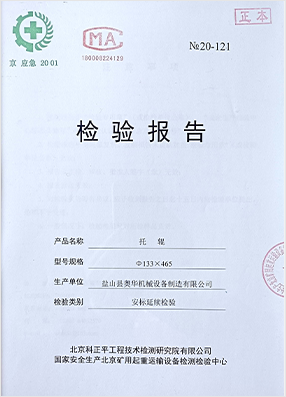 Afrikaans
Afrikaans  Albanian
Albanian  Amharic
Amharic  Arabic
Arabic  Armenian
Armenian  Azerbaijani
Azerbaijani  Basque
Basque  Belarusian
Belarusian  Bengali
Bengali  Bosnian
Bosnian  Bulgarian
Bulgarian  Catalan
Catalan  Cebuano
Cebuano  Corsican
Corsican  Croatian
Croatian  Czech
Czech  Danish
Danish  Dutch
Dutch  English
English  Esperanto
Esperanto  Estonian
Estonian  Finnish
Finnish  French
French  Frisian
Frisian  Galician
Galician  Georgian
Georgian  German
German  Greek
Greek  Gujarati
Gujarati  Haitian Creole
Haitian Creole  hausa
hausa  hawaiian
hawaiian  Hebrew
Hebrew  Hindi
Hindi  Miao
Miao  Hungarian
Hungarian  Icelandic
Icelandic  igbo
igbo  Indonesian
Indonesian  irish
irish  Italian
Italian  Japanese
Japanese  Javanese
Javanese  Kannada
Kannada  kazakh
kazakh  Khmer
Khmer  Rwandese
Rwandese  Korean
Korean  Kurdish
Kurdish  Kyrgyz
Kyrgyz  Lao
Lao  Latin
Latin  Latvian
Latvian  Lithuanian
Lithuanian  Luxembourgish
Luxembourgish  Macedonian
Macedonian  Malgashi
Malgashi  Malay
Malay  Malayalam
Malayalam  Maltese
Maltese  Maori
Maori  Marathi
Marathi  Mongolian
Mongolian  Myanmar
Myanmar  Nepali
Nepali  Norwegian
Norwegian  Norwegian
Norwegian  Occitan
Occitan  Pashto
Pashto  Persian
Persian  Polish
Polish  Portuguese
Portuguese  Punjabi
Punjabi  Romanian
Romanian  Russian
Russian  Samoan
Samoan  Scottish Gaelic
Scottish Gaelic  Serbian
Serbian  Sesotho
Sesotho  Shona
Shona  Sindhi
Sindhi  Sinhala
Sinhala  Slovak
Slovak  Slovenian
Slovenian  Somali
Somali  Spanish
Spanish  Sundanese
Sundanese  Swahili
Swahili  Swedish
Swedish  Tagalog
Tagalog  Tajik
Tajik  Tamil
Tamil  Tatar
Tatar  Telugu
Telugu  Thai
Thai  Turkish
Turkish  Turkmen
Turkmen  Ukrainian
Ukrainian  Urdu
Urdu  Uighur
Uighur  Uzbek
Uzbek  Vietnamese
Vietnamese  Welsh
Welsh  Bantu
Bantu  Yiddish
Yiddish  Yoruba
Yoruba  Zulu
Zulu Sealed Bearing Housing Solutions for Enhanced Machinery Performance and Longevity
Understanding Sealed Bearing Housing A Comprehensive Overview
Sealed bearing housings play a crucial role in the performance and longevity of various machinery and equipment. As industries increasingly demand high efficiency and reliability, the importance of understanding these components cannot be overstated. This article explores the significance, design, benefits, and maintenance of sealed bearing housings.
What is a Sealed Bearing Housing?
A sealed bearing housing is a protective enclosure that houses bearings and provides a controlled environment for their operation. It typically includes seals, which prevent the ingress of contaminants such as dust, dirt, water, and other particles that could damage the bearing. The design of a sealed bearing housing ensures that the lubricants within the bearing are retained, thereby extending the life of the bearing and preventing premature failures.
Importance of Sealed Bearing Housings
The primary function of a sealed bearing housing is to provide protection. Bearings are essential components in rotating and moving machinery, and any contamination can lead to increased friction and wear. Sealed housings significantly reduce the likelihood of failure that could stem from environmental factors. Moreover, they can help maintain optimal operating temperatures by minimizing heat generation caused by friction, which is a common concern in high-speed applications.
Additionally, sealed bearing housings are key to reducing maintenance costs. By protecting bearings from external elements and maintaining lubricant integrity, these housings can extend maintenance intervals. This means less downtime for machinery, allowing businesses to operate more efficiently and effectively.
Design Considerations
When designing a sealed bearing housing, several factors must be considered. The material used for the housing is crucial; it should offer high strength while being resistant to corrosion and wear. Common materials include stainless steel, aluminum, and various plastics, each selected based on the specific application environment.
The design should also accommodate different shapes and sizes of bearings, ensuring a snug fit that minimizes movement and vibration. The sealing mechanism, whether it be contact seals or non-contact seals, must be chosen based on the environmental conditions and the presence of contaminants. Proper sealing ensures that lubricants remain inside while preventing unwanted particles from entering.
Benefits of Sealed Bearing Housings
1. Extended Bearing Life One of the most significant advantages of sealed bearing housings is their ability to protect bearings from environmental damage, thereby extending their lifespan.
sealed bearing housing

2. Reduced Maintenance With less contamination and improved lubrication retention, maintenance requirements are lower compared to open bearings. This leads to cost savings in maintenance labor and parts.
3. Enhanced Performance Sealed bearing housings help maintain optimal performance by keeping bearings clean and lubricated, which is crucial for machines operating at high speeds and under high loads.
4. Versatility They can be used across various applications and industries, from automotive to aerospace, manufacturing, and beyond.
Maintenance Best Practices
Even though sealed bearing housings significantly reduce maintenance needs, it is still essential to monitor and maintain them regularly. Here are some best practices
- Regular Inspections Periodic checks can help identify any signs of wear or damage before they lead to failure.
- Lubrication Checks Ensure that the lubricant levels are adequate. Depending on the seal type and application, the lubricant may need to be replaced or replenished.
- Temperature Monitoring Excessive heat can indicate issues with bearings or lubrication. Monitoring temperature can help in early identification of potential problems.
- Seal Inspection Regularly inspect seals for signs of wear, cracking, or other degradation.
Conclusion
Sealed bearing housings are fundamental components that ensure the efficiency, reliability, and durability of machinery across various industries. Their ability to protect bearings from contamination while maintaining lubricant integrity makes them an essential choice for engineers and maintenance professionals. Understanding their design, functionalities, and maintenance practices can lead to improved operational efficiency and reduced downtime, contributing to the overall success of any mechanical system. As industries continue to evolve, so will the technology and design of sealed bearing housings, reinforcing their significance in mechanical engineering.
-
Revolutionizing Conveyor Reliability with Advanced Rubber Lagging PulleysNewsJul.22,2025
-
Powering Precision and Durability with Expert Manufacturers of Conveyor ComponentsNewsJul.22,2025
-
Optimizing Conveyor Systems with Advanced Conveyor AccessoriesNewsJul.22,2025
-
Maximize Conveyor Efficiency with Quality Conveyor Idler PulleysNewsJul.22,2025
-
Future-Proof Your Conveyor System with High-Performance Polyurethane RollerNewsJul.22,2025
-
Driving Efficiency Forward with Quality Idlers and RollersNewsJul.22,2025





























